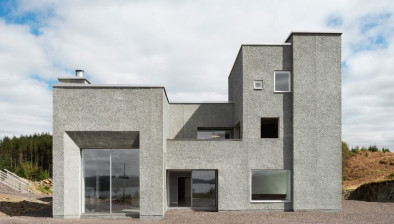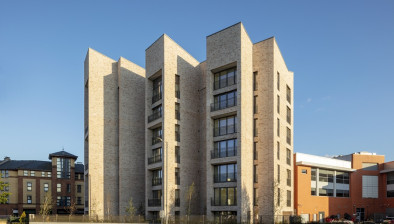Social housing development makes Stirling Prize shortlist for first time
The Royal Institute of British Architects (RIBA) has shortlisted a social housing development for its most prestigious prize for the first time.
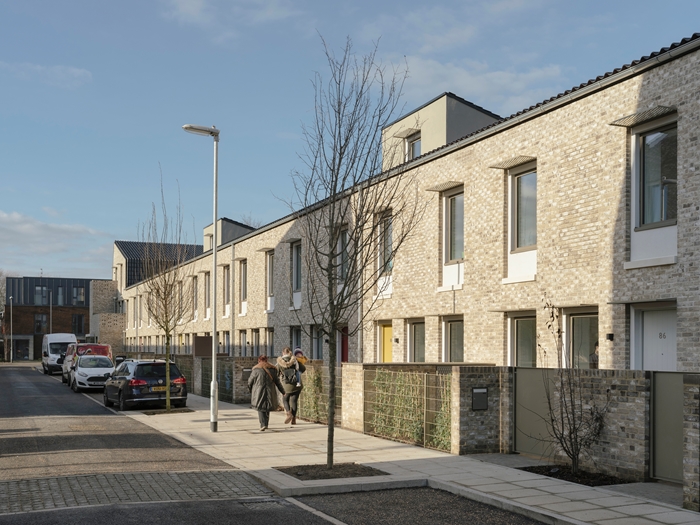
© Tim Crocker
Goldsmith Street in East Anglia has been designed by Mikhail Riches with Cathy Hawley for Norwich City Council.
The project is one of six buildings in the running for the 2019 Stirling Prize for the UK’s best new building.
The Stirling Prize is judged against a range of criteria including design vision; innovation and originality; capacity to stimulate, engage and delight occupants and visitors; accessibility and sustainability; how fit the building is for its purpose and the level of client satisfaction.
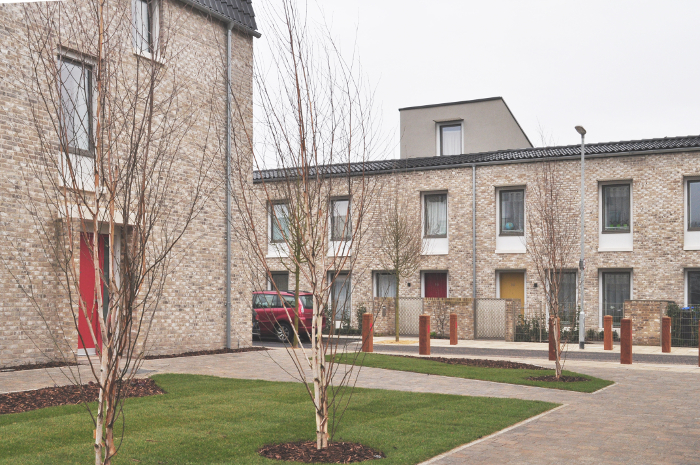
© Matthew Pattenden
In shortlisting the Goldsmith Street project, judges noted: “Finding Goldsmith Street takes you through a very typical English Provincial City residential neighbourhood. Goldsmith Street is an exception though. It captures the spirit of a very special place. A coherent visual field that communicated the best of enlightened modern domestic European architecture from the outset. The more one absorbs this project, the more this feeling is reinforced.
“The architects won this scheme of just over a hundred dwellings a dozen years ago, and have worked and re-worked it, each time keeping their aim of creating a highly sustainable community in mind. The eventual layout is a simple series of seven terrace blocks arranged in four lines. An immediate connection with a very recognisable urban layout, the architects were able to convince the planners to accept a narrow 14m between blocks – effectively the street width – through a careful design of windows to minimise overlooking, and a very thoughtful asymmetric roof profile that allows good sunlight and daylight into the streets. The result is a very dense development, but one that is in no way oppressive.
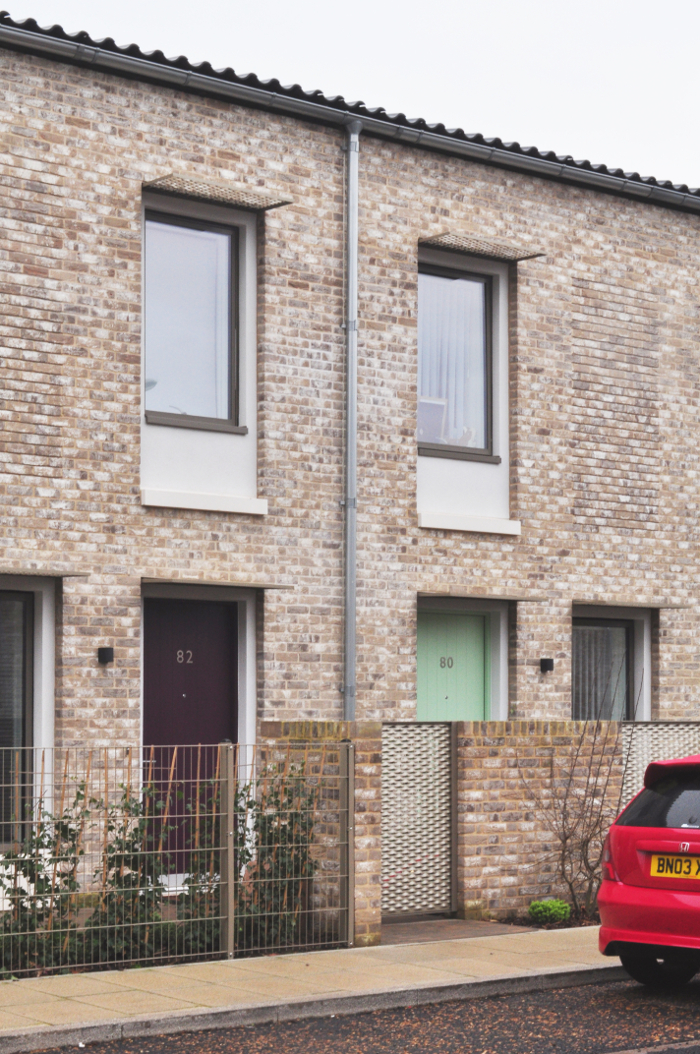
© Matthew Pattenden
“Although the layout has a traceable link with the English housing tradition, the rest of the project is very modern in its conception. Black glazed pantiles, mitred as they go from a roof covering to a wall covering, perforated metal brise soleil, and the new detailing associated with energy-conscious design are wholly contemporary. The brick is also contemporary, with characteristic intentional white efflorescence colouration, set in a mews or small terrace layout. To be certified Passivhaus, the windows had to be smaller than the proportion in a Georgian or Victorian terrace, so the architects have used a set-back panel around the windows to give an enlarged feel, and panels of textured brick have been introduced into the main elevations, again to balance the feel of the fenestration along the terrace.
“Provision for parking has been pushed to the perimeter, so the streets feel safe and ‘owned’ by pedestrians rather than cars. Bin stores have been thoughtfully used in the front gardens to create buffer zones between the public footpath and the front doors, giving a humane gradation of public to private territory. The ‘back street’ has gardens and a pathway down the centre that has been fully landscaped, although the path takes a wavy course that stops the sense of a ‘back alley’ and gives a welcome curving foil to an otherwise rectilinear scheme.
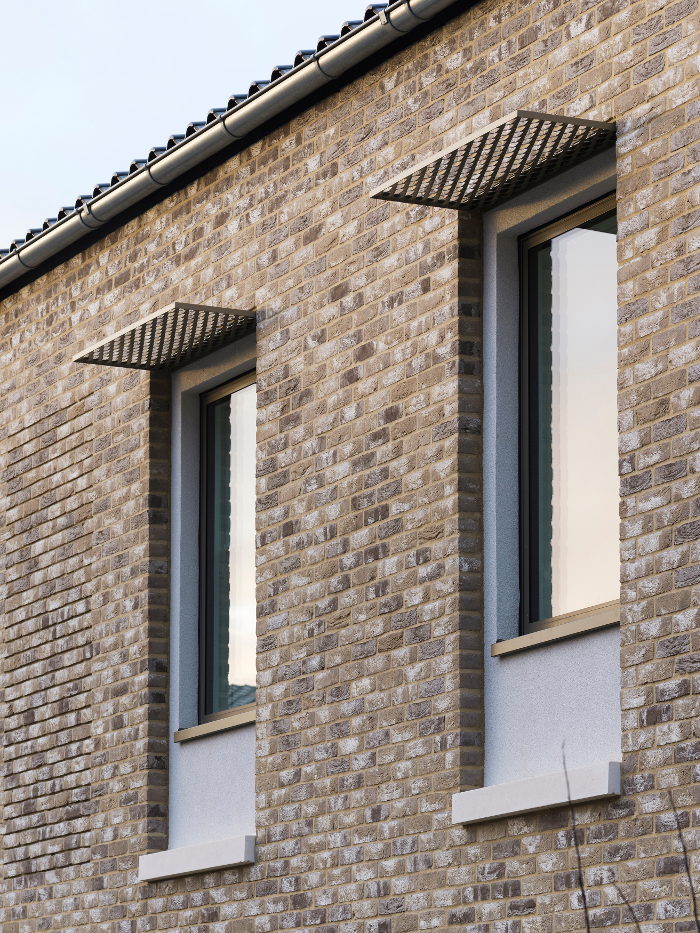
© Tim Crocker
“Tireless work by the architects has kept the standard of workmanship up to a very high level. Social tenants get impressively high specification interiors – in both the end-of-terrace flats and the central terrace houses. Passivhaus detailing has nicely accommodated the mechanical ventilation Heat Recovery (MVHR) units in the interiors, and the services intakes have been intelligently controlled. Each dwelling has a range of providers’ services pre-wired so that they can be connected on-demand, without the need for service providers to come in later and drill through vital vapour barrier lines.
“Bringing the reduced energy consumption associated with Passivhaus to mass housing is a great achievement and one that has taken a large amount of effort and care by the architects. This is an exemplary project.”
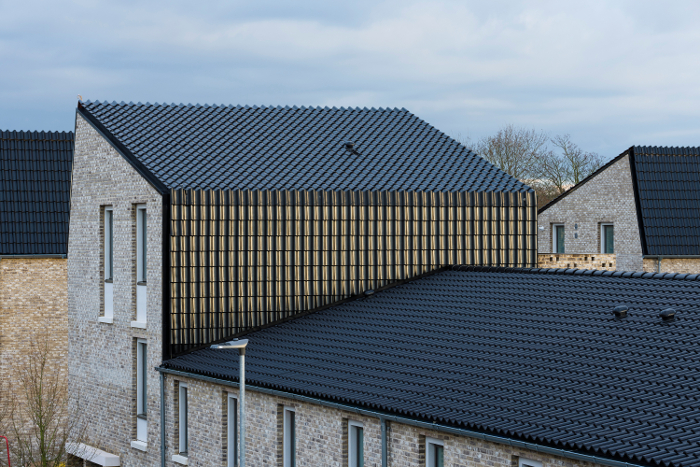
© Tim Crocker
Completing the shortlist is:
- Cork House by Matthew Barnett Howland with Dido Milne and Oliver Wilton
- The Macallan Distillery and Visitor Experience by Rogers Stirk Harbour + Partners
- London Bridge Station by Grimshaw
- Nevill Holt Opera by Witherford Watson Mann Architects
- The Weston, Yorkshire Sculpture Park by Feilden Fowles Architects
RIBA president Ben Derbyshire said the 2019 shortlist was testament to “the enviable global reputation of UK architecture”.
The nominated buildings, he said, “could hardly be more diverse” yet had “ground-breaking innovation, extraordinary creativity and the highest quality materials” in common.
Bloomberg’s European headquarters took home the prize last year.
The winner will be announced in a ceremony on October 8.







